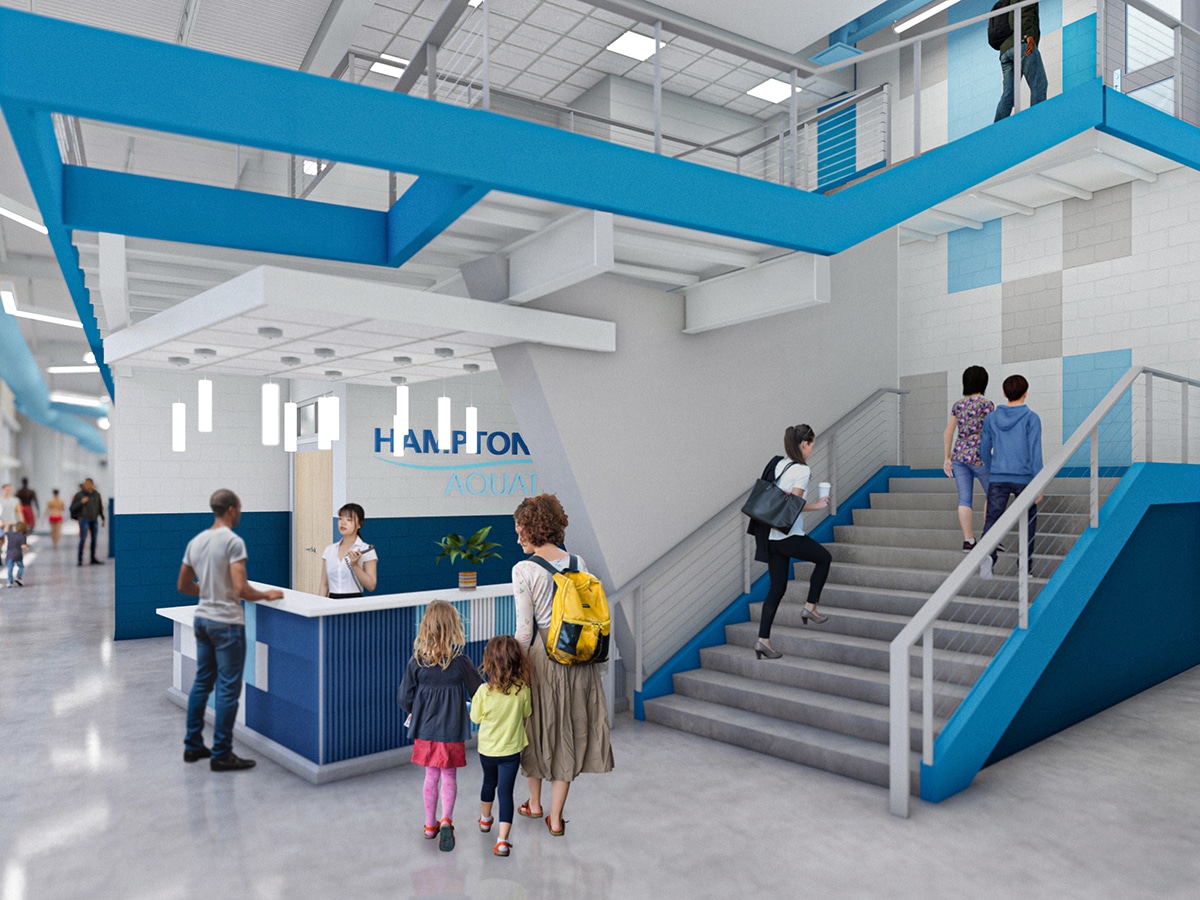Project Perspectives: Transformative Design Meets Health and Safety Innovation

Construction is progressing rapidly at the Hampton Virginia Aquaplex, the largest facility of its kind in Virginia. Once completed in 2022, the facility will feature an eight-lane 25-meter pool, an eight-lane 50-meter competition pool, two moveable bulkheads, two one-meter and two three-meter springboards. It will also have spectator seating for 1,500, on-deck athlete seating for 760 and a 30,000 square foot outdoor splash park.
But as impressive as the structure is from a design perspective on the outside, there is also significant innovation on the inside around health and safety, including indoor air quality.
Experts say that air quality is a particular challenge for indoor aquatic environments. Chlorine, a very common pool disinfectant, does an important job in pools keeping people safe from harmful bacteria and diseases, but recently it has been discovered that it can react with organic compounds like dirt, sweat, and urine to create by-products such as chloramine compounds.
These chloramine compounds have been shown to cause upper respiratory irritation, increase risk of asthma, and aggravate other existing respiratory conditions in pool users. The compounds are heavier than air and typically sit just above the water’s surface, right where swimmers breathe. When pool water is churned up during activity, these compounds can be circulated throughout a facility, affecting spectators and swimmers alike. The compounds are also very acidic, which is believed to be the one of the main culprits of early rusting and degradation of interior building materials, rather than humid indoor air alone.
The Hampton Virginia Aquaplex addresses these challenges by employing some of the latest innovations around indoor air quality. For example, a state-of-the-art air evacuator system uses underground ductwork to draw contaminated air away from pool surfaces, where it tends to settle, and exhaust it through the building roof.
Through heat-exchangers in the pool mechanical units, the systems are also designed to recoup a portion of the heat that would otherwise be lost during the exhaust process. This helps keep the facility comfortable and energy efficient.
In the following video, watch GuernseyTingle architect and former competitive swimmer Chris Cromer, AIA, discuss what this project means to him and how indoor air quality was a major goal of the design.
“We’re so excited to have people use the Aquaplex for a long time and be able to learn to swim, to enjoy different types of competitive swimming and to do it all in a healthy way,” said Cromer.
The Aquaplex design is already attracting attention from across the country.
In addition to serving as the home for Hampton City Schools swimming teams, the facility is capable of hosting large state and national events for competitive swimming, water polo, diving, artistic swimming, and more. The USA Artistic Swimming Junior Olympic Championship – one of the largest artistic swimming events in the world – is the first championship booked at the Aquaplex, scheduled for 2023.
For more information on other GuernseyTingle Recreation & Entertainment projects and additional areas of expertise, visit guernseytingle.com/expertise-overview.
